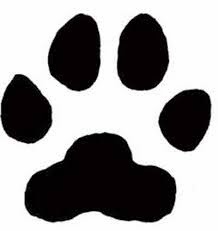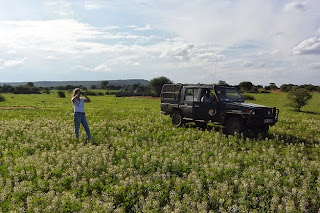Sorry for the silence,
lion friends. A combination of internet
problems and sneaky lions have kept us away from the computer. As it stands we were trying to find male
lions to collar. Little did any of us
know how hard this would be. If female
lions are sneaky, then male lions are sneakier.
For days we have been
riding the rough, red dusty roads of Mpala and the North country in search of
males. We are discovering that the
classic concept of lion “prides” is not so straightforward in Kenya. Males are sometimes with other males, females
are sometimes only with females.
Youngsters stay with mom, and adults males can cruise all around. All of us are bruised and banged from massive
ruts and gullies in the road as we criss-cross lion territory.
Our task has been
even harder with the spring rains. New
foliage has sprung up overnight. The
grasses are taller, all of the thorny brush have sprouted leaves, and wild flowers
have popped up everywhere. It is beautiful but the plants have had
several effects on the wildlife.
First,
the favorite prey of lions can find food everywhere. There is no need to hang around watering
holes as easy targets for lions.
Instead the antelopes, zebras, and giraffes walk around the Kenyan countryside
eating plants that are blooming right beneath their feet (or hooves). Even the elephants are out in fields lazily
picking up flowers by the trunkful and stuffing them into their hungry
mouths. Times are good in Mpala, Kenya
if you are an herbivore.
Times are also good
if you are a carnivore- the dense foliage has given the lions infinite places
to hide. It is far too dangerous to
search for lions in the dense brush.
Only a fool would step foot in country like this. A lion could be just around the next acacia tree.
But our vigilance and
persistence has paid off. The first sign
that we are on the right track – was literally the right track. There in the sand on the side of the road was
a lion print. In that moment I realize
that this African lion is a REALLY BIG cat.
The pawprint of a
housecat can fit in the toe print of this lion.
Steve our lion tracker, tells us that this is just a female print. It is enough to make one gulp out loud. How much bigger could a male lion print be?
Slowly edging our
LandCruiser into the brush, we follow the prints and the direction of the
trampled grass to find the owner of the print.
Then just around the corner, beneath the arch of a prickly thorn bush is
a rustle o leaves….













